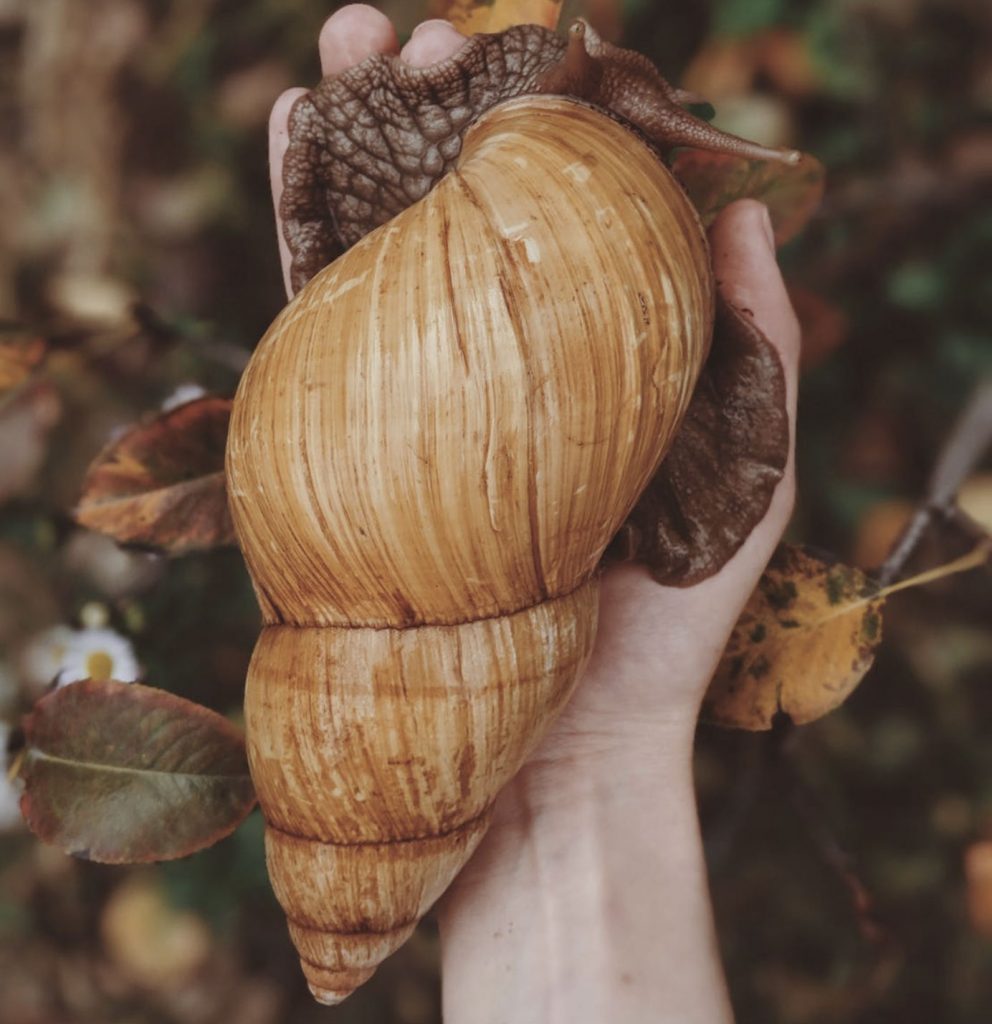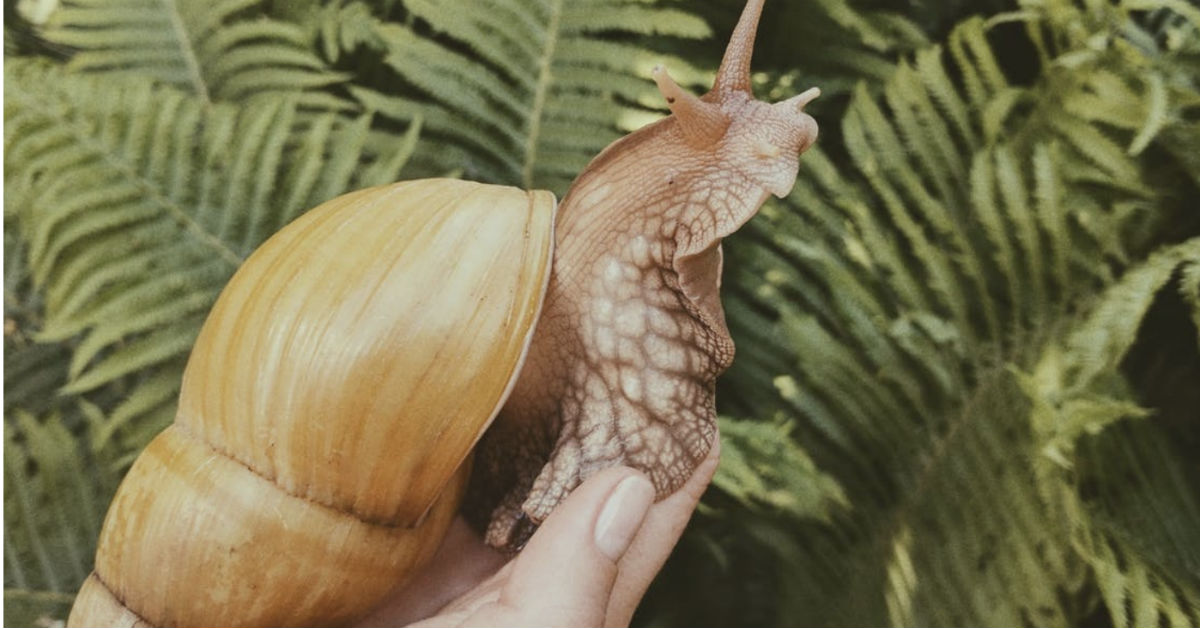These massive snails are actually real — and a few years ago, they took over Florida.
Meet the giant African land snail, a species native to Kenya and Tanzania.
As adults, they can grow over 8 inches in length, nearly as big as a person’s face or hand.
They are recently on the news headlines, making themselves known to others who have never met them yet.
Due to the pet trade, these gentle herbivores have made their way into humid tropics of China, India and even the southern United States over the past 80 years.
Now, they’re considered one of the world’s most invasive “pests,” since they have an insatiable hunger for crops and gardens.
This, of course, is due to humans releasing their hungry pet snails into the wild.
The giant snails don’t have natural predators in places like South Florida — so, until recently, populations there have boomed out of control since the 1960s.
The Giant African Land Snail is one of the largest terrestrial gastropods.
They have a light to dark brown shells with vertical stripes of a darker shade of brown on them.
They have an average lifespan of about 5-7 years.
When they have enough food, and the weather is satisfactory, they tend to live much longer.
Some of them have been known to live up to 10 years.
The “Achatinafulica” is one of the most invasive species in the world and the United States Department of Agriculture considers it one of the most damaging species for the agriculture and crops in the country.
It is known to eat at least 500 different species of plants.
This species is on the list of the 100 most harmful invasive alien species in the world, but Achatinafulica does not seem to surrender.
This snail that stands out for its large size has easily adapted to life in regions outside its natural habitat and is considered one of the biggest land snails.
The shell of the giant African snail reaches up to 7.8 inches in length and 2.7-3.9 inches in height.
An adult weighs about 32 grams.
The body has two short tentacles and two long ones that have the eyes.
The shell has a conical and narrow appearance, with 7 to 9 spirals visible on its surface.
The color is not always the same; it depends on the environmental conditions of the site where the snail dwells. It is usually slightly dark brown or reddish with yellowish vertical stripes.
The opening is relatively small.
An important part of the anatomy of this snail is a structure in the mouth similar to a tongue, which is called the radula.
It has small teeth that allow snails to scrap the food before eating it.
They have a “muscular foot” that helps them move to release a mucus while they move to reduce friction and avoid damage to their tissues.
The shell is the location where the Giant African Land Snail takes refuge from predators.
They will also spend time inside of their shells when the temperatures begin to dip too low at night for their comfort.
These Giant Snails are now crossing the pond and Florida residents are living in fear of this hostile takeover.
Even the Department of Agriculture in Florida is at a loss of these happenings.
They are making the residents be aware of the outbreak of these snails and they never forget to remind people that these snails are very real.
Recommended video!
“Octopus Returns To Give A Thank You To People Who Rescued It”
[rumble video_id=v14n3z domain_id=u7nb2]





